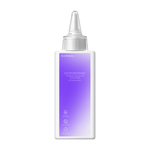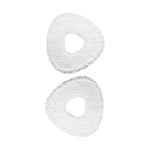While most modern models are safe, scratches can still happen under certain conditions. Factors like brush design, trapped debris, or worn-out parts may contribute to surface damage, especially on sensitive flooring types.
This article breaks down how robot vacuum design features — including wheels, suction, and brush types — might lead to scratches. We’ll also cover common causes such as debris accumulation and navigation errors, plus which floor materials are more susceptible to damage.
Finally, you’ll learn practical ways to prevent robot vacuums from damaging your floors, from regular maintenance to choosing the right model. Whether you’re using hardwood, vinyl, or tile, this guide helps you enjoy hands-free cleaning without the worry of scratches.
Robot Vacuum Design Features That Might Cause Floor Scratches

Robot vacuums are designed to navigate and clean a variety of floor surfaces autonomously. They are equipped with sensors to avoid obstacles, map out cleaning paths, and detect dirt. Most models have brushes, wheels, and suction mechanisms that work together to pick up debris. However, certain design features and operational factors can contribute to floor scratching.
Brush Types and Placement
Robot vacuums typically use one or two types of brushes: main brushes and side brushes. Main brushes, often a combination of bristles and rubber blades, are located underneath the unit and are responsible for agitating dirt and debris. Side brushes, usually made of soft bristles, extend from the edges to sweep dirt into the vacuum's path.
While side brushes are generally gentle, main brushes can pose a risk if they have stiff bristles or if debris like sand gets trapped in them. Over time, these brushes can cause micro-scratches, especially on delicate surfaces like hardwood.
Wheel Material and Mechanics
The wheels of robot vacuums are crucial for movement. Made from various materials, such as rubber or plastic, these wheels can leave marks or scratches if they become worn or if debris gets lodged in them. Additionally, some wheels have treads or patterns that could potentially damage sensitive floors.
Suction Power and Dirt Containment
High suction power is beneficial for effective cleaning, but it also means that any hard particles, like small rocks or sand, can be picked up and dragged across the floor, potentially causing scratches. Ensuring that the vacuum's dirt containment system is robust and emptied regularly can help mitigate this risk.
Despite these precautions, certain scenarios and conditions can lead to scratches. Understanding these can help users take preventive measures.
Common Causes of Scratches from Robot Vacuums
Even with protective features, robot vacuums can still cause scratches under certain conditions:
Debris Accumulation
If the vacuum’s wheels or brushes pick up and carry around small, sharp particles like sand or pebbles, these can scratch the floor as the robot moves.
Worn-out Parts
Over time, the brushes and wheels can wear out and become rough, increasing the risk of scratching. Regular maintenance and timely replacement of parts are essential.
Improper Navigation
Although rare, malfunctions in the navigation system can cause the robot to bump into furniture or walls repeatedly, leading to scratches.
Sharp Objects
If the robot vacuum encounters sharp objects like nails or glass shards, it can drag them across the floor, causing damage.
Which Floors Are More Likely to Be Scratched by Robot Vacuums
Different flooring materials have varying levels of susceptibility to scratches:
Hardwood Floors
While hardwood is durable, it can be susceptible to scratches, especially if the finish is worn or if the wood is soft. Robot vacuums can contribute to scratching if they drag debris or if their wheels or brushes accumulate dirt and grit.
Laminate Flooring
Laminate floors are more resistant to scratching than hardwood, but they can still be damaged by sharp objects or abrasive particles. Ensuring the robot vacuum is clean and well-maintained can help prevent issues.
Tile and Stone Floors
These surfaces are generally very durable and less prone to scratching. However, some tiles have delicate glazes that can be scratched by hard particles.
Vinyl and Linoleum
These floors are relatively soft and can be scratched more easily than tile or hardwood. It's crucial to ensure that the robot vacuum’s wheels and brushes are free of debris.
How to Prevent Robot Vacuum From Damaging Floor

To minimize the risk of scratches, users can take several preventive measures:
Regular Maintenance
Clean the vacuum’s wheels, brushes, and sensors regularly to ensure they are free of debris. Replace worn-out parts promptly.
Use Protective Accessories
Some robot vacuums come with or can be fitted with protective bumpers and soft bristle brushes designed to reduce the risk of scratches.
Prepare the Area
Before starting the robot vacuum, do a quick scan of the area to remove any sharp or large debris that could cause scratches.
Choose the Right Model
Opt for models specifically designed for your type of flooring. Some high-end models offer features tailored to protect delicate floors.
Wrapping Up
Robot vacuums are generally safe for most types of flooring when used correctly. While the risk of scratches cannot be entirely eliminated, understanding how their design, usage conditions, and floor types interact can help you take the right precautions. Regular maintenance, thoughtful model selection, and preparing your space before cleaning go a long way in protecting your surfaces.
If you're looking for robot vacuums that protect your floors, consider models with certified zero-tangling brushes, advanced navigation, and soft mop systems. For Australian households in particular, Narwal Australia offers a range of premium robot vacuums engineered to clean efficiently while being gentle on your floors and furniture.




















































